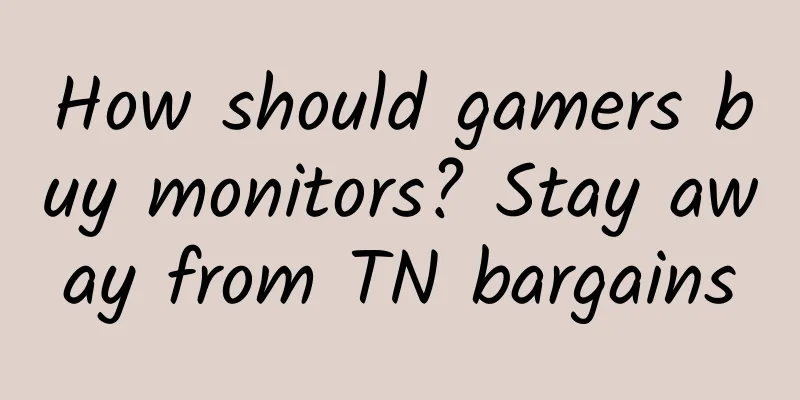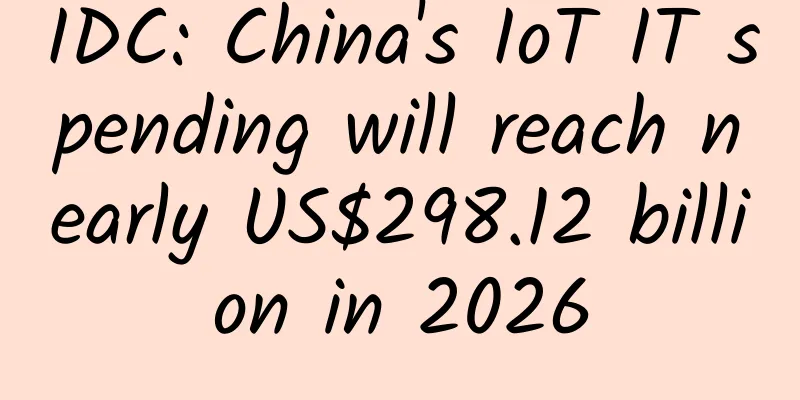Has online traffic really dried up?

|
In recent years, we heard that Ma Huateng , Jack Ma and Ma Dongmin made a fortune in the Internet industry . Bosses who made a lot of money in all walks of life and those who couldn't make it have also grasped big data and cloud computing and made great efforts to enter the Internet. The Internet emphasizes "one center and two basic points": one center is user-centered; the two basic points are the sticking point and the pestle. The sticky part is to acquire customers, also called " user growth "; the sticky part is to make money, also called "commercialization". Regarding user growth, the most common argument heard in the past two years is that "online traffic has dried up." Is this true? Please listen to me slowly. New products need to be advertised to attract customers, even this scammer can understand:
The former is called brand advertising; the latter is called performance advertising. This is the principle, but in fact, over the past decade, with the rapid growth of online traffic, the most important marketing position for brand and effect has long since shifted from traditional media such as CCTV to major websites and applications: Putian-based hospitals rely on search, opening stores to sell genuine and fake goods requires driving, and application downloads require investment in major markets. Even the withdrawn TV budget has been invested in emerging video websites. However, in the past two years, the situation has changed drastically, and people who promote products say that it is difficult to acquire customers: the price of publication has been rising, bidders have become more and more aggressive, but the conversion rate has not increased. No matter what platform, the money is spent quickly after it is deposited, and not many customers are brought in. Either give 80% of the profits to big media to maintain the business; or deal with those fake volume channels with attractive prices. In short, gone are the days when online traffic was cheap and plentiful. As a result, the industry exclaimed: Online traffic has dried up, and now is the time to vigorously expand offline traffic! It is certainly right to expand offline traffic, but has online traffic really dried up? joke! If you calculate the time you spend on your mobile phone every day and then check the growth momentum of mobile phone users, you will find that the scale of mobile Internet traffic has far exceeded that of the PC era. Traffic is simply overflowing rather than drying up. In fact, it is the fundamental changes in the communication structure brought about by the mobile Internet that have made us, who are accustomed to the traditional delivery logic, at a loss. Dear readers, please pay attention to one important point: whether it is CCAV or the primary school principal, they have one thing in common: the spectators believe in their words without a doubt. In other words, they have real influence on their audience. However, these were all things of the Paleolithic Age. Nowadays, social etiquette has collapsed and the masses, bewitched by the Internet, no longer believe even a newspaper report about the yield of 10,000 kilograms per mu. How could they willingly buy and remember the recommendations of conscientious media? In fact, the fundamental reason for the weakening of media influence is the serious information overload. Everyone has become numb to the endless bombardment of clickbait headlines . Here comes the question: As the influence of big media has declined, whose influence has increased? Due to the rapid social trend of mobile Internet, everyone has become a small media that can influence the hundreds of people in his or her circle of friends ; and for these hundreds of acquaintances, your influence far exceeds that of CCAV. For the sake of a rigorous scientific experiment, I secretly observed my wife for a long time and found that since she had WeChat , more than 80% of her non-standard product purchasing decisions came from recommendations in the group or from friends. Strictly speaking, the influence of this small circle of acquaintances has existed since our ancestors came down from the trees. However, before the advent of social networks , this kind of influence could only be released in offline contact scenarios such as playing cards, drinking, and chance encounters in the village, in the form of chatting with wives. It was far from being as simple as picking up a mobile phone and doing it all year round, in a de-coded high-definition and exaggerated manner. In short, in the era of social mobile Internet, the effective path of communication has changed from Figure A below to Figure B: Pay attention, the climax of this article is coming: given a communication environment like Figure B, how should you advertise to acquire customers? The answer is intriguing: stop wasting your budget on centralized media and invest your money in millions of ordinary users who can influence a small group of people! So, what kind of marketing is it to invest advertising budget in ordinary users? In the past, you gave money to the media, and the media showed you ads, and sometimes promised to bring you a certain number of sales leads; now, the user brings you sales leads, and you give the money to him personally - what form is this? This is just first-level distribution! Compared with the media-centric influence, the first-level distribution model utilizes the influence brought by the strong relationship between users, and its effect far exceeds that of media advertising. The effect is good, but what about the quantity? Wouldn't it be much slower for each person to influence his or her own small circle of people than for large media to have strong exposure that reaches millions of users? On the contrary, don’t forget that the small world network composed of social relationships has a six-degree theory. Under the stimulation of interests, the baton will be passed on a few times and then known to the world. In fact, if we summarize the successful marketing cases last year, they basically all utilized a similar first-level distribution methodology. The most typical example is probably the social e-commerce represented by Pinduoduo:
It is said that in February, Pinduoduo's GMV has exceeded 50 billion yuan, and the growth rate is still soaring. There is also an interesting genetic modification mode of group buying - bargaining: you can give the product you want to buy to a friend, and he can open it and take a look, and then you can save a few cents. If you think about it carefully, isn’t this just settling accounts based on CPM when delivering ads to users? The wisdom of marketers is truly endless. In addition to group buying, you may also be familiar with the "Brain King" question-answering battle mini program . In fact, its first-level distribution method is quite simple and direct: just transfer the mini program to the group and you will get points. Based on the data I have observed, the speed of its spread is daunting: I played it for a few days in November, and the number of people online at the same time was more than tens of thousands; when I looked again in February, the number of people online at the same time had reached millions, the speed of growth was daunting. What? You’re saying that these are all sneaky marketing methods used by small teams, and that big companies should still engage in positional warfare-style hard advertising? That's wrong! If you don’t believe it, take a look at the following two examples. There are many other wonderful examples. Here’s an assignment for everyone: carefully study the apps and mini-programs on your phone to see who has utilized the first-level distribution method to grow users, what highlights are there in their marketing design, and whether the results are satisfactory. As for those products that still stick to traditional marketing ideas and invest a large amount of budget in centralized media, not many of them can gain a foothold after burning through their money, and they are left with nothing but a vast expanse of empty space. In addition to social networks, the popularity of mobile payments is also a key driving force behind the product of the first-level distribution model. This is equivalent to adding the leverage of money on the basis of circle dissemination, so that people like you and me who are used to bargaining for three or five cents in the morning market will be excited by the reward of several cents, and spontaneously join the army of disseminators. This model has an important operational link, which is to deal with false orders. In fact, the technology in this area may not be as difficult as imagined. In most cases, the platform does not have such a strong motivation to combat fake orders in order to increase the numbers. Note that we are talking about "first-level" distribution. Of course there is second-level or higher-level distribution. This is the notorious intangible cultural heritage in the marketing field - pyramid selling. In fact, the social environment of mobile Internet also makes it easy for MLM performance artists to thrive. Here, we also give a chestnut to remind everyone:
In terms of communication effect, MLM is certainly better than first-level distribution; however, too much is as bad as too little, and too strong a communication ability is not necessarily a good thing. This will make the value of the product itself no longer important, deviating from the commercial essence of normal customer acquisition. In addition, once you anger the officials and they search your house and arrest you, nothing you eat will taste good. Therefore, Internet operators who really want to acquire customers should fully utilize the social communication model of primary distribution, while avoiding the temptation to cross the border and engage in pyramid schemes. This is the correct user growth methodology in the mobile Internet era. For small offline businesses, primary distribution in social networks is even more important. Except for those who have the money to sponsor TV programs, local businesses have not had any good marketing methods, and group buying is nothing more than intercepting customers who have already arrived at the store. In fact, in the thousands of years of commercial society, what did teahouses, taverns, and brothels rely on? Isn’t it just word of mouth from customers? Now that we have social networks and mobile payments, why not add fuel to the word-of-mouth marketing model and let the flames start to burn? Therefore, I believe that the general trend is not that online products demand traffic from offline products, but that offline merchants demand traffic from online products, from social networks, and from primary distribution. Please repeat with me, in the social era, placing advertisements to ordinary users is the most effective marketing method. As for those big media advertising salesmen who buzz around like war flies, shouting about brand-effect integration every day and selling you sales leads at the price of brand advertising, let them find a cool place to practice their splits! The author of this article @北冥乘海生 is compiled and published by (Qinggua Media). Please indicate the author information and source when reprinting! Product promotion services: APP promotion services, advertising platform, Longyou Games |
>>: Xigua Video product analysis report!
Recommend
Unbelievable! "Einstein's Brain" sold online for over 70,000. Who is buying it?
The world is so big that nothing is impossible. E...
Are there any side effects of always taking painkillers for migraine?
《Cotton Swab Medical Science Popularization》 Wang...
Data Structure of Information Olympiad
Brief introduction to the data structure resource...
How to make a hit short video? 5 ways to play!
Publish 30 videos a day and get millions of impre...
How to sell products on Douyin? One article will tell you everything!
The two most popular words recently are online an...
8 hot topics in marketing in 2020!
What I want to share with you today is: In the cu...
Flying cars test the waters in the tourism industry, Geely Travel plans to expand into Hainan
On June 3, Geely Group (New Business) Co., Ltd., ...
Do you remember what you dreamed about last night?
Everyone dreams at night, but not everyone rememb...
Can eating ginkgo nuts cure diabetes? Can soaking ginkgo leaves in water lower blood pressure and blood lipids? Improper consumption may...
gossip Ginkgo is a perennial woody plant of the G...
Can you make money from Kuaishou video views? Introduction to Kuaishou's money-making methods
This article mainly introduces whether Kuaishou v...
WeChat "Search": How to layout keywords to grab traffic
On May 17, WeChat iOS users updated to version 6....
Android丨Detailed explanation of ASO in Huawei Market
Today we are going to talk about how the new pack...
Disassembling the AARRR model: How to attract 150,000 fans in 10 days at 0 cost?
I believe that many people engaged in operations ...
In-depth analysis of activity operations (Part 2): Post-launch operations
This article provides a detailed explanation of w...
The pH standard of sanitary napkins has caused controversy. It is not reliable to only look at the pH!
Review expert: Wang Xuejiang, professor at Capita...









